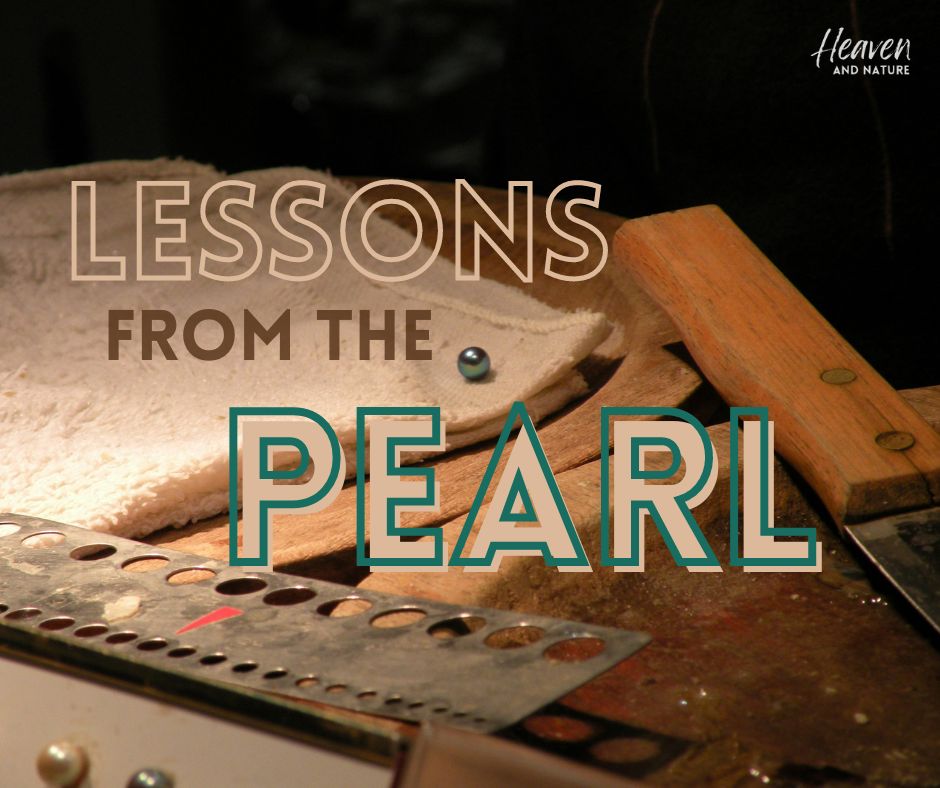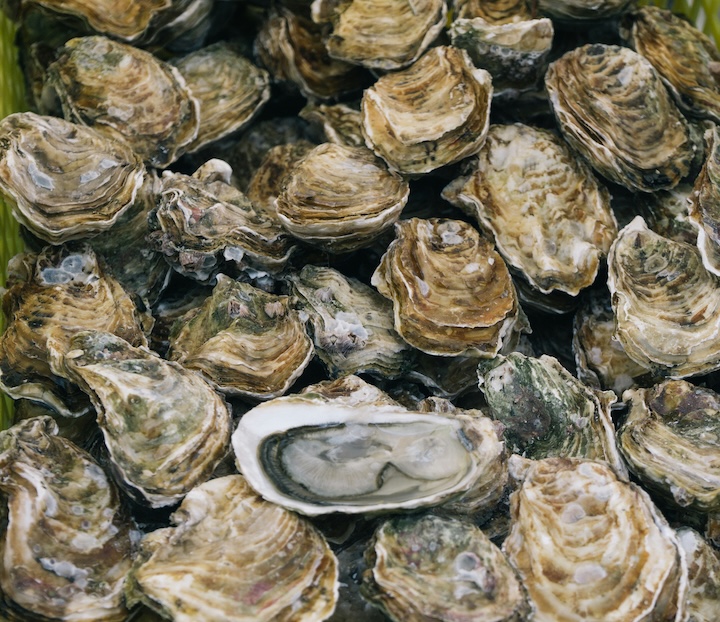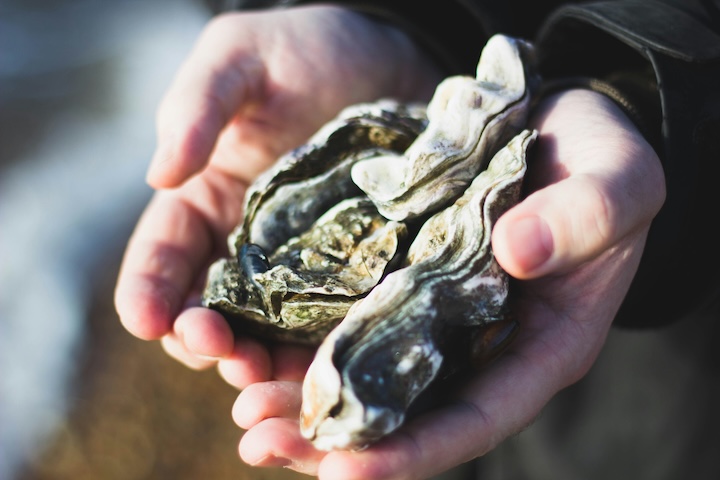The way pearls are formed in mollusks parallels how God uses irritations in our lives to make something beautiful.

Parallels of God’s Character
There are so many places in the world and in life where God’s character is represented.
I love when God’s character represented in the natural world parallels something that’s true about our faith walk as well.
To me this points to God being steadfast and unchanging. That we would find these similarities consistent across so many diverse areas of the world.

One of the aspects of nature I admire is how mollusks take irritations and turn them into pearls.
People have viewed pearls as valuable resource since Jesus walked the earth. That’s evident in the ways the Bible references pearls. The parable of The Pearl of Great Price uses the metaphor to communicate this.
Johannes Vermeer’s famous painting Girl With A Pearl Earring shows how they continue to be considered valuable and symbols of beauty throughout history.
Let’s take a deeper look at ways pearls can teach us about our faith walk. We’ll see a couple places where the Bible mentions them.
Let your Light Shine
A beautiful aspect of pearls is that they reflect light.
They amplify the light and bring a luminous quality to the air around them.
They interact with the light.
The light reveals unique qualities about their colors and the dynamic layers that lie within them.
Similarly, the Bible teaches that we as Christians are to amplify the light of Christ that lives within us and share it with the world around us.
We can let the love of Jesus bring out our unique giftings to demonstrate how diverse God’s gifts to the world are through us!

Adaptation to Life
Pearls take something irritating and turn it into something enduring and beautiful.
Pearls are formed when a piece of sand, food or parasite is covered by layers of the pearlescent material nacre. It’s made of a calcium-based chemical called aragonite. Pearls act as a protective mechanism so mollusks can continue to function the way they were made to function.
In a similar way, we can use the grace God gives us to respond to difficult situations so He can transform them into something beautiful.
This doesn’t mean we have to show up as “perfect” or think that “reflecting light” means to always be cheerful!
There are things in life that are HARD. We don’t have to make them look easy.
As Christians we will not always respond perfectly to situations where there’s pain or irritation. There’s grace to be human and to be imperfect.
However, we can know with certainty that when we’re experiencing something irritating or painful that God is with us. We can ask for the presence of God to be near us and cover us, like the pearlescent material covers the irritation. Then we can have the spiritual resources we need to continue through that situation.
And when we look back at how the unique contours of that season are reflected in our testimony, we’ll see them reflecting back the goodness of God that covered all of it.

Fearfully and Wonderfully Made
What some might consider imperfections, we consider diversity and individuality.
Every pearl is different and is formed by the mollusk in which it lives.
We are all unique in how God made us—our talents and our personalities. So when we allow ourselves to be formed by Christ, we will all reflect the goodness of God in different ways—just like pearls come in a variety of colors, shapes, and sizes.

The Parable of The Pearl of Great Price
In the Bible in Matthew 13:45-46, Jesus talks about pearls in a parable. He talks of a man who sells everything he owns to buy a valuable and rare pearl.
It says, “Again, the Kingdom of Heaven is like a man who is a merchant seeking fine pearls, who having found one pearl of great price, he went and sold all that he had and bought it.”
In this story we see there’s one specific “pearl” that’s more valuable than others. That’s worth investing in.
A life of following Jesus is worth investing in. Our faith practice has beauty and value that will continue to be a worthwhile investment. It will continue to grow in value for as long as we pursue it.

The Gates of Heaven
The Bible also mentions pearls in Revelation 21:21, saying they’re what the Gates of Heaven are made of.
I thought this was interesting because I believe there’s purpose to the many metaphors in the Bible and symbolism in the physical things that carry spiritual meaning.
I found a commentary on this verse I thought was worth including. The author Roger W. Lowther writes this:
“It’s fascinating, then, that pearls—formed from brokenness and suffering—symbolize the perfection of the kingdom of heaven, for no one can enter its celestial city without first walking through its ‘pearly gates.’ ”
The commentary goes on to talk about how this metaphor points to us walking with God through our lives regardless of the season, and the way this points to the grace of God in the gospel story.
[Read the rest of Mr. Lowther’s article about pearls here.]

As you look around your world today, where can you ask God to cover situations with grace, like mollusks cover irritations with nacre?
How can you ask people to help you in this?
I think sometimes God wants to use faith communities to be nacre for each other—applying strength where we would not find it on our own.
How can you pursue and invest in your relationship with God like the merchant pursuing and purchasing The Pearl of Great Price?
(Sources referenced for this article: Smithsonianmag.com, mtw.org)
Here’s more…
- Daily Bread: Our Enjoyment of the Outdoors • Our Enjoyment of God
- Hearing God Speak in the Outdoors
- How to Use a Daily Devotional
- 9 Devotionals for Your Next Trip - July 18, 2024
- Lessons from the Pearl - June 6, 2024
- 5 Devotionals for Your Next Outdoor Adventure Trip - May 9, 2024
